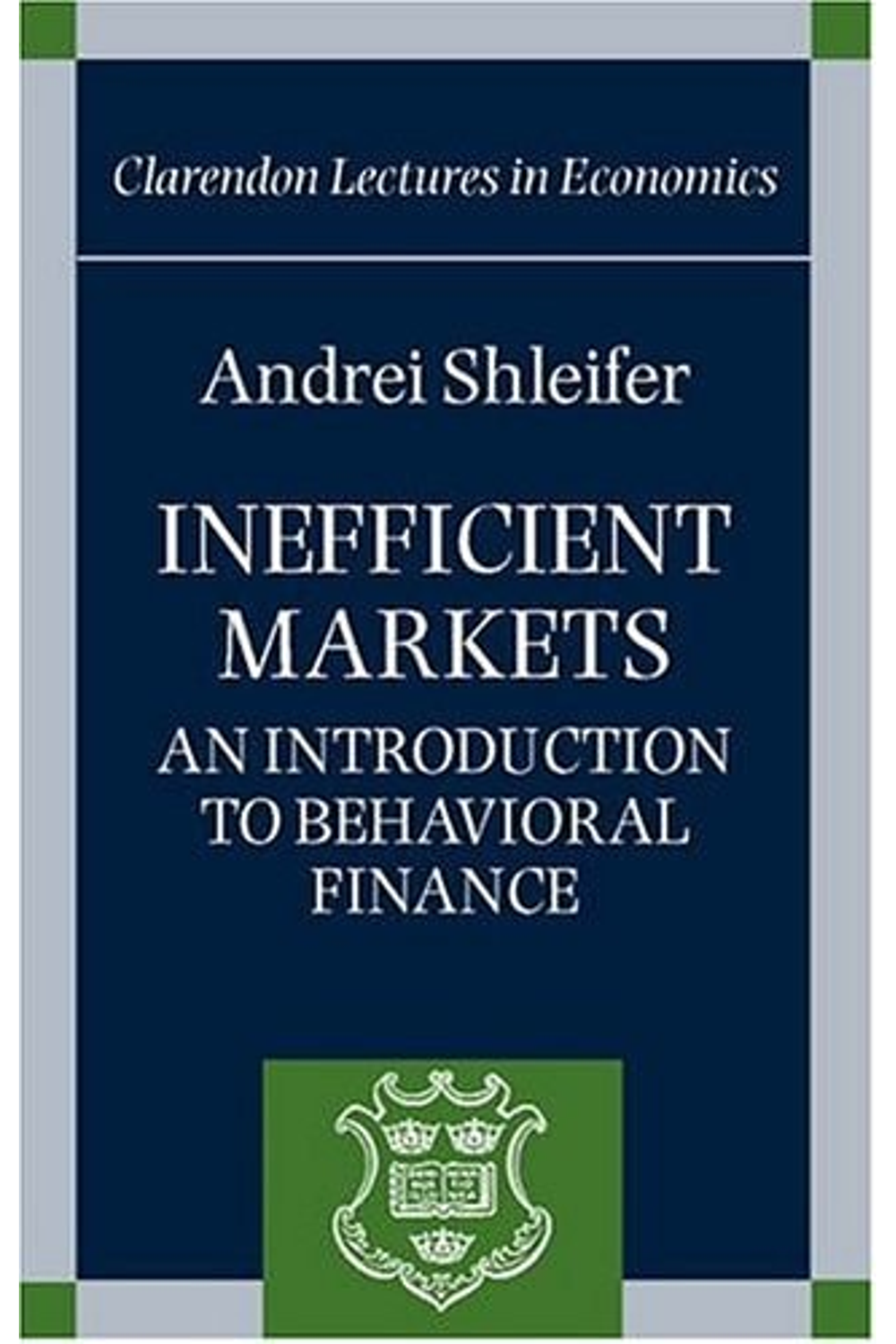Unlock the secrets behind market anomalies with Andrei Shleifer’s *Inefficient Markets: An Introduction to Behavioral Finance*. Challenging the traditional Efficient Market Hypothesis, Shleifer, a leading figure in behavioral economics, delves into how psychological biases and limited arbitrage shape financial outcomes. This book examines how investor irrationality, influenced by factors like herd behavior and cognitive errors, creates opportunities and risks often overlooked by conventional financial models. Explore how behavioral finance explains market phenomena like bubbles, crashes, and the persistence of value and momentum investing. Discover how Shleifer’s models, grounded in real-world observations, offer a more accurate depiction of market dynamics than the idealized EMH. Essential reading for investors, finance professionals, and anyone seeking a deeper understanding of market behavior beyond pure rationality. Understand the real-world impact of biases and limitations on financial markets, leading to better investment decisions and a more realistic perspective on economic systems. This edition from Oxford University Press offers invaluable insights into the workings of modern finance.
Inefficient Markets: An Introduction to Behavioral Finance (Clarendon Lectures in Economics)
15.75 $
In stock
The efficient markets hypothesis has been the central proposition in finance for nearly thirty years. It states that securities prices in financial markets must equal fundamental values, either because all investors are rational or because arbitrage eliminates pricing anomalies. This book describes an alternative approach to the study of financial markets: behavioral finance. This approach starts with an observation that the assumptions of investor rationality and perfect arbitrage are overwhelmingly contradicted by both psychological and institutional evidence. In actual financial markets, less than fully rational investors trade against arbitrageurs whose resources are limited by risk aversion, short horizons, and agency problems. The book presents models of such markets. These models explain the available financial data more accurately than the efficient markets hypothesis, and generate new predictions about security prices. By summarizing and expanding the research in behavioral finance, the book builds a new theoretical and empirical foundation for the economic analysis of real-world markets.
| Authors | |
|---|---|
| Binding | |
| Condition | |
| ISBN-10 | 0198292279 |
| ISBN-13 | 9780198292272 |
| Language | |
| Pages | 224 |
| Publisher | |
| Year published | |
| Weight | 287 |
| Edition | 1 |
Related products
- Additional information
- Currencies
- USD – United States dollar
- EUR – Euro
- GBP – Pound sterling
- CNY – Chinese yuan
- BRL – Brazilian real
- MXN – Mexican peso
- JPY – Japanese yen
- PHP – Philippine peso
- THB – Thai baht
- PLN – Polish złoty
- CAD – Canadian dollar
- MYR – Malaysian ringgit
- AUD – Australian dollar
- TWD – New Taiwan dollar
- CZK – Czech koruna
- SEK – Swedish krona
- HUF – Hungarian forint
- ILS – Israeli new shekel
- CHF – Swiss franc
- HKD – Hong Kong dollar
- DKK – Danish krone
- SGD – Singapore dollar
- NOK – Norwegian krone
- NZD – New Zealand dollar





